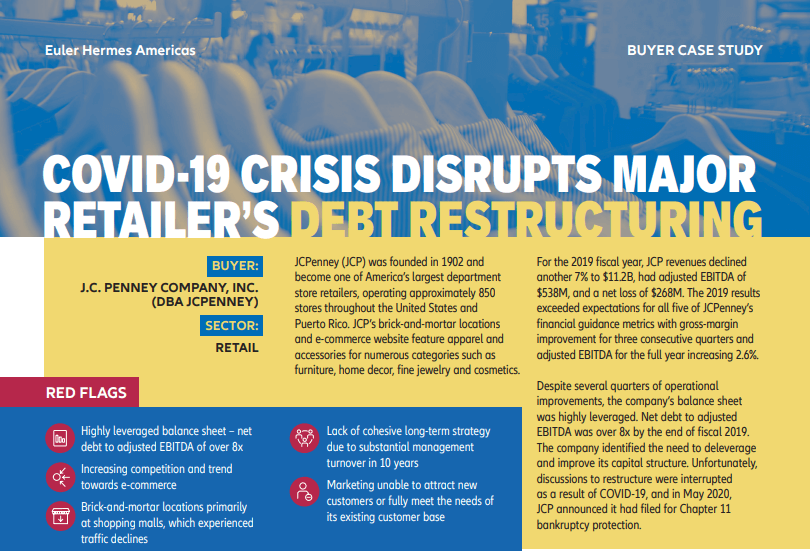Andrew Gertz: We'll take any good news that we can get, so thanks for sharing that. You touched on this a little bit before, but I can't imagine how difficult it must be right now trying to stay ahead of risk in this environment, especially with COVID-19 and everything that's causing in a variety of markets. You talked about claims data a bit and some of the things we look at, but can you take us through more of the data points, the marketplace factors, things of that nature that go into actually assessing the risk behind a business and what its credit worthiness might be?
Steve Georgetti: Yeah, it's a big question. So I'm going to try and give you a not-so-big answer but try and go through it a little bit.
So if we go back to March 2020 when the world really changed, you know, the way we segregate our portfolio is we have call it 20,000 to 30,000 buyers that are sensitive, whether that be because they've all had exposure or because the grade of the company is such that we need to keep a close eye on them. So we made the decision at that point in time that we needed to revisit and reanalyze all 20,000 of those buyers manually. It was quite an undertaking and it's not something we did overnight. And so we really had to do a stress analysis on, "Okay, what sector are these companies in?" right?
If you're in hospitality or you're in the cruise line industry or airline, your demand literally went to zero or close to it. So you could have had a company very strong that, okay, their demand is now zero for the foreseeable future. How much cash liquidity do they have to sustain themselves? We were much more forward-looking with what could be the impact?
Clearly, the need to have financial disclosure is important. If we don't have financial disclosure, that presents a challenge to us. With that financial disclosure, we could look at, you know, all of the classic credit fundamentals and then stress that over time.
So that's the first thing.
So that's the main part of our portfolio. But the other big part of our portfolio: frequency claims – that where there's a high volume of claims, but not necessarily for a high dollar amount.
And so luckily for us about a year ago, we subscribed to an exchange called the Small Business Financial Exchange. And it gives a lot of insight to how companies are paying their bank. Are they paying their credit card late? What's their balance? What's their average days of payment? And that information is absolutely critical on the SME part of our portfolio, which is over 200,000 buyers. So that is one major source of data.
And then, of course, you have the traditional sector subscriptions we belong to, standard and -- all of this, of course we have classically, but honestly the biggest part of information that we use is the information that clients give us by way of claim filings, collection filings. The past due report, again, is another big indicator.
So putting all this together provides a very compelling picture of how a business is doing.
So the second part of that question is: okay, looking forward right now that we're sitting here in November 2020, what do we do going forward?
And again, it's a continual monitoring of that risk. It's not just, "Hey, we looked at it in March or April, and we're done.” We're looking at these sensitive risks constantly every quarter.
Like we were forecasting negatively with the [economic] crisis that we were seeing {although no one knew in March the magnitude). We're doing the same thing now, right? When are things going to reopen? Which sectors are more prone to benefit? Which sectors still have a lot of headwinds in front of them?
So that's what we're in the middle of right now is a regrading, again, after we just did the massive one back in March, which carried us through to today.



